Kiribati
My flight from the Marshall Islands to Kiribati was short and easy — just over an hour. Although Kiribati has only a few more atolls than the Marshalls, it has three times the population. I landed at the international airport on Tarawa, an atoll where half of Kiribati’s 130,000 citizens live.
Tarawa’s lagoon is the size of Lake Tahoe. Unlike Lake Tahoe, Tarawa’s Lagoon is surrounded by coconut palms and sandy beaches — not rocky shores and snowy peaks. The lagoon is only a few meters deep. Unlike Tahoe’s deep blue waters, the Tarawa Lagoon is colored green by Halimeda, a species of calcareous green algae found in warm seas and coral reefs. Flying into Tarawa, I had a grand view of this green lagoon. (I’ve added traditional Kiribati music to put you in the “island mood.”)
Once I arrived, the first thing I had to learn about this country was how to pronounce its name. I had fun recording a few locals. Here’s what they said:
Now I was ready to learn more about Ki·ree·bas.
From a distance, Tarawa is a ring of beautiful palm-fringed islands with white sandy beaches. Up close, it’s not quite as picturesque, at least not South Tarawa.
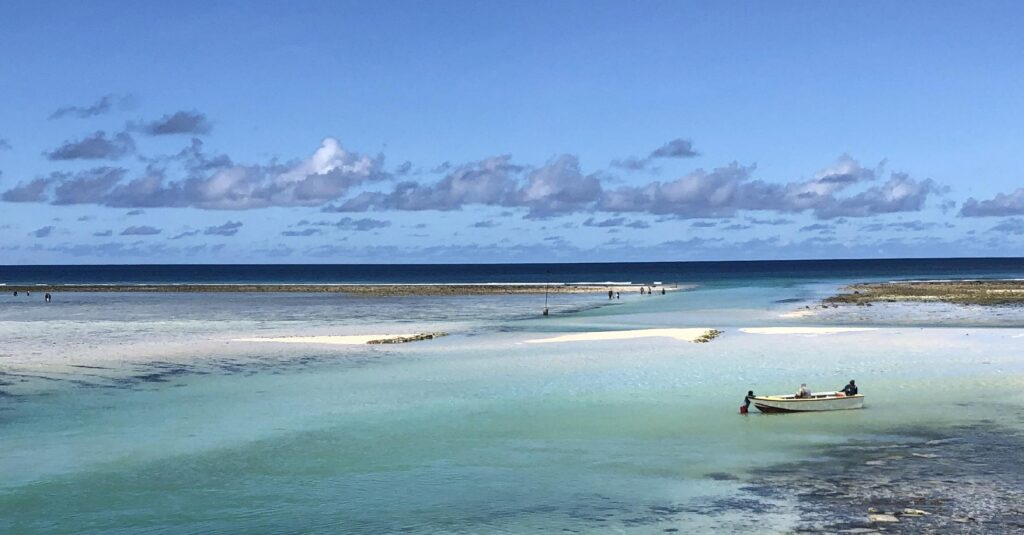
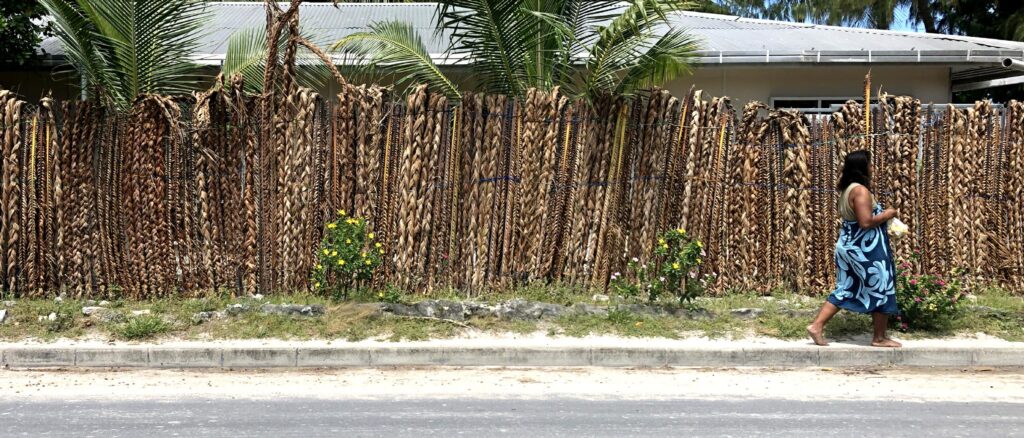
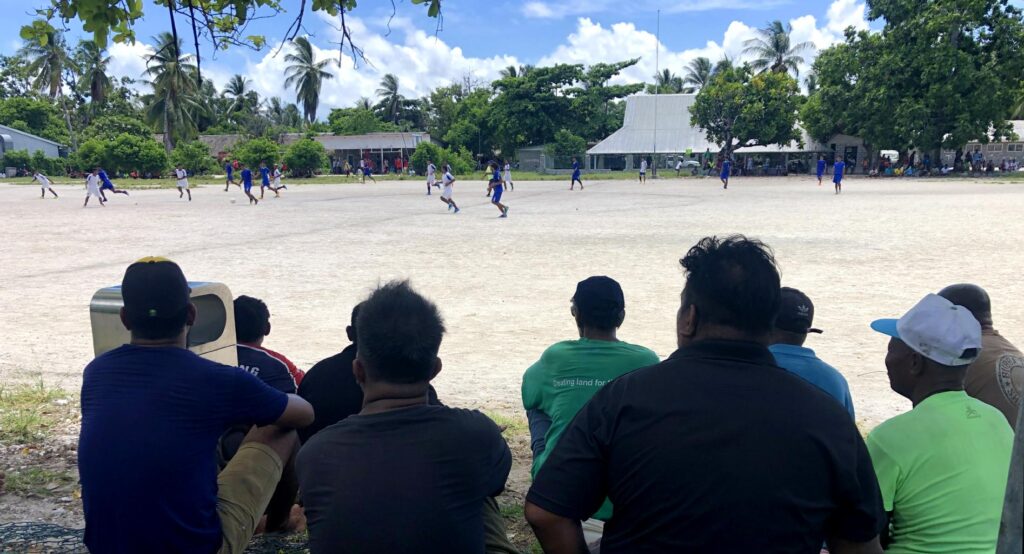
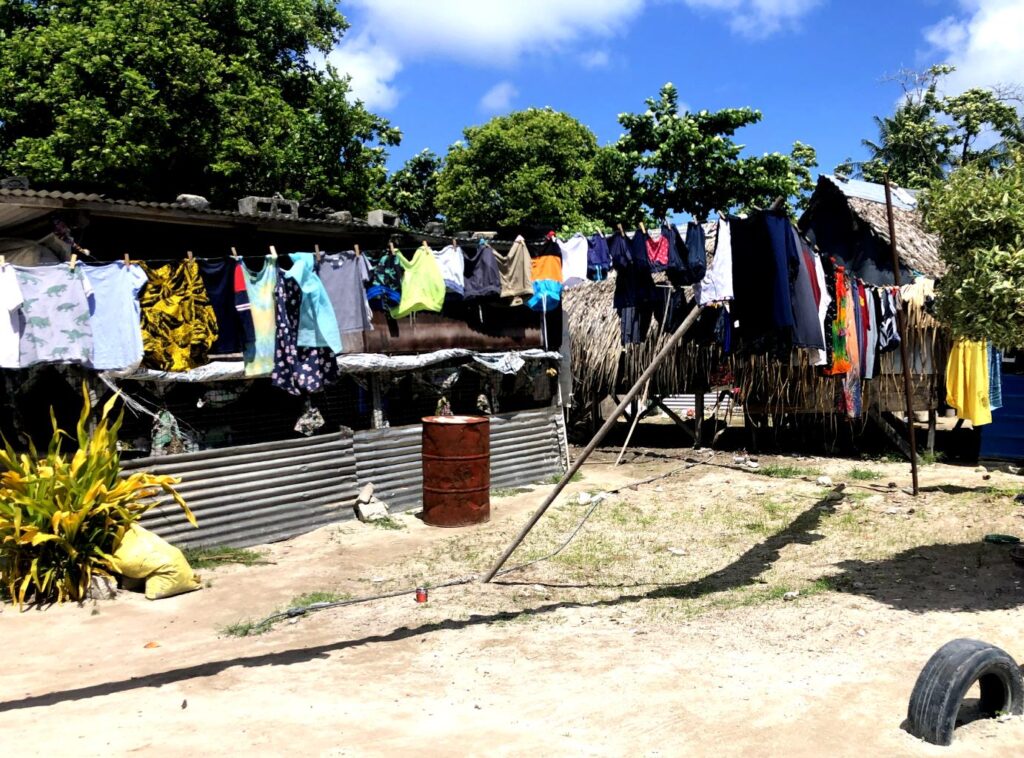
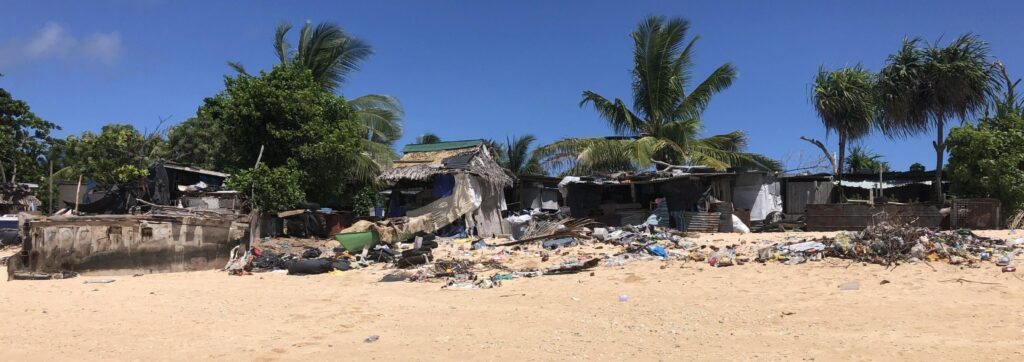
The photos above are from Betio (pronounced Be·so). This is the largest town on Tarawa. It’s a shanty town with more than 17,000 people crammed into 1.5 km2. Betio has a higher population density than Hong Kong or Singapore — and without any high-rise housing. This overcrowding produces a lot of pollution. The beaches are littered with garbage.
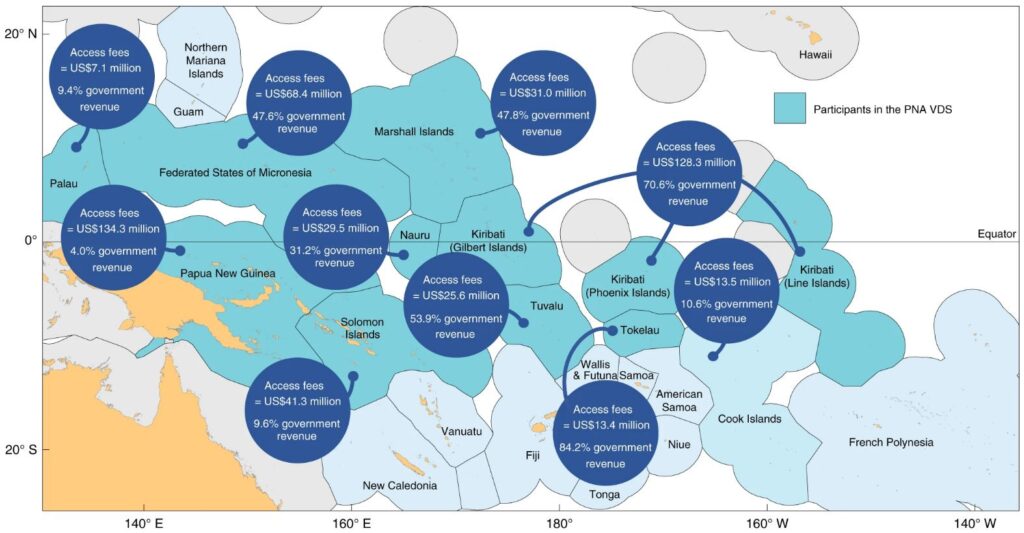
So how does an over-crowded island that has insufficient land to feed its people and no natural resources survive? The answer is Skipjack tuna. A major share of the world’s supply of sashimi, sushi and canned tuna is swimming in Kiribati’s Exclusive Economic Zone (EEZ). Kiribati’s annual income from fishing access fees in its EEZ comes to about $1000 per person for every man, woman and child in this country. This may be one reason why Kiribati’s unemployment rate remains above 30%.
Although Betio doesn’t offer any exciting attractions, it’s famous for being the site a major American victory in World War II. On the morning of November 20, 1943, 17 American aircraft carriers, 12 battleships, 8 heavy cruises, 5 light cruisers, 66 destroyers, 36 transport ships and 35,000 troops arrived here with the intent of dislodging about 5,000 Japanese soldiers who were dug into heavily-defended positions. At that time, Tarawa was the most heavily defended atoll invaded by Allied forces in the Pacific. The Battle of Tarawa lasted 76 hours. The Japanese fought to the last man. Only a handful were taken prisoner. About 1000 US Marines were killed — mostly on the first day. Another 3000 Americans were seriously wounded. For its violence and decisiveness, the Battle of Tarawa is sometimes compared to Concord Bridge, the Alamo, Pickett’s Charge at Gettysburg and the Battle of the Little Bighorn. Today, there are 37 cemeteries on Tarawa. Click the illustration above to view the newsreel made from live footage shortly after America’s victory.
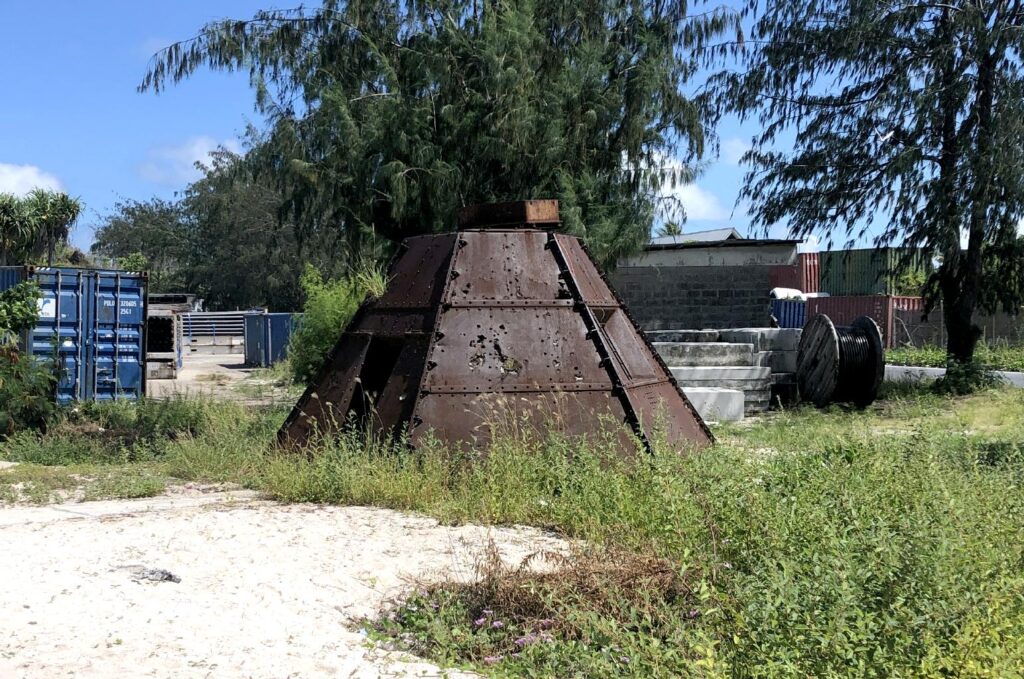
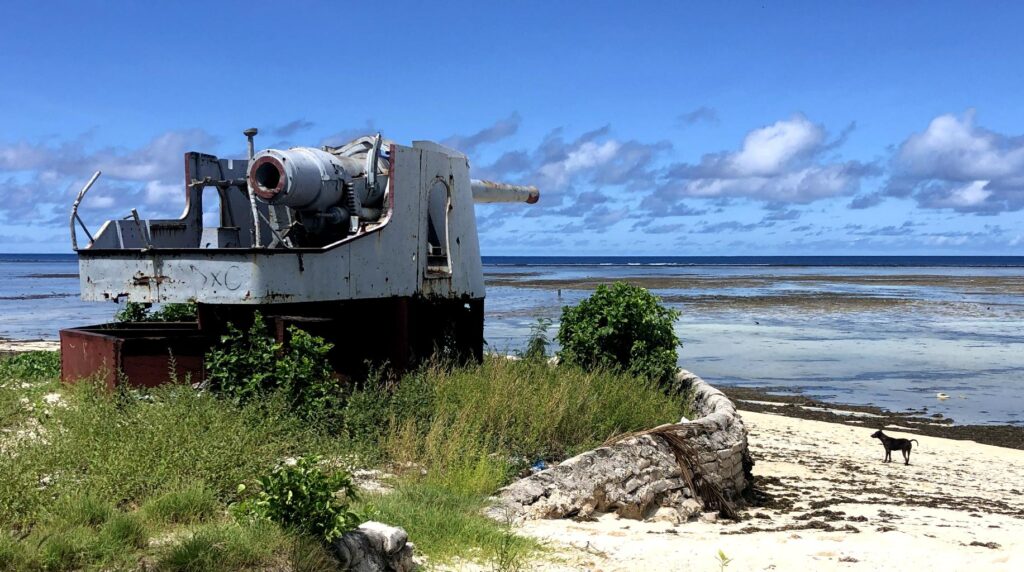
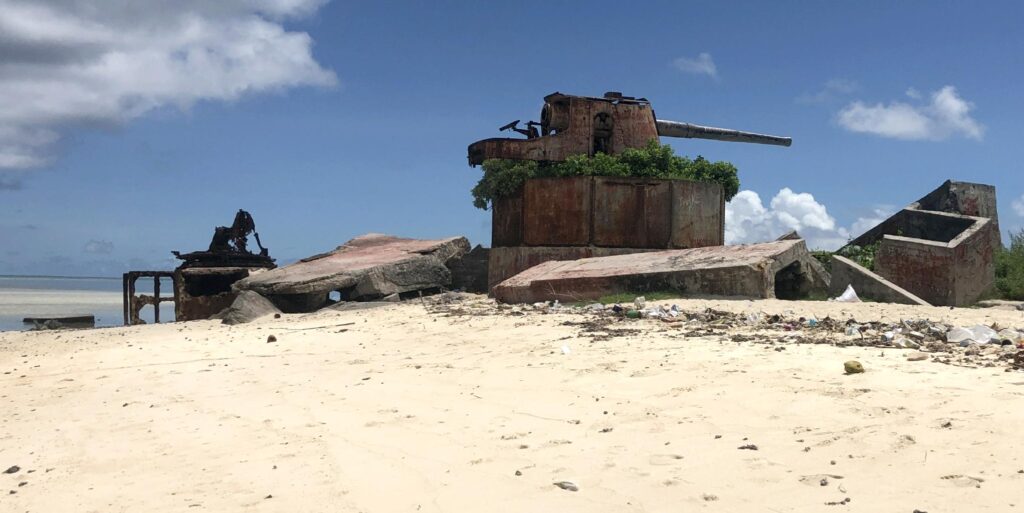
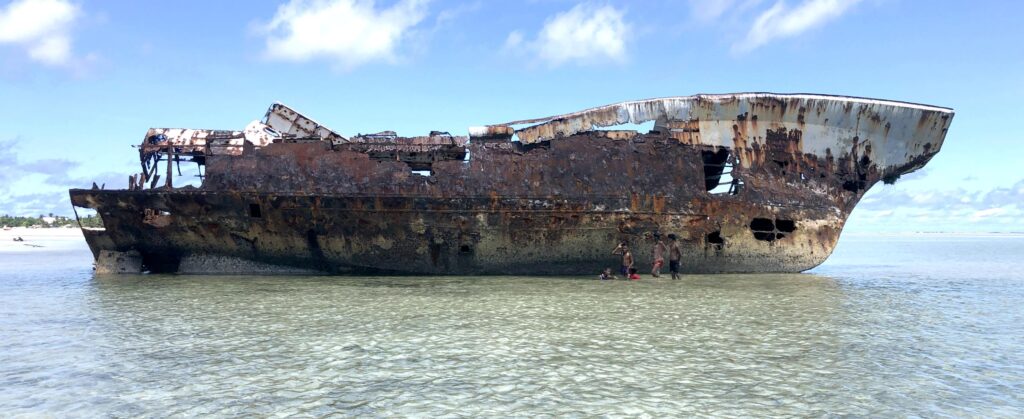
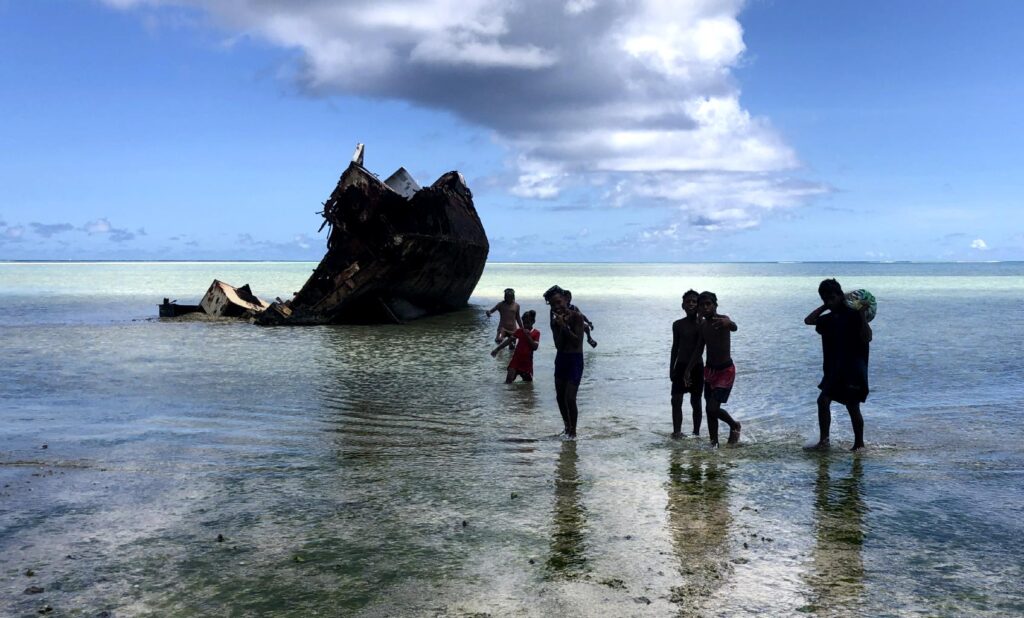
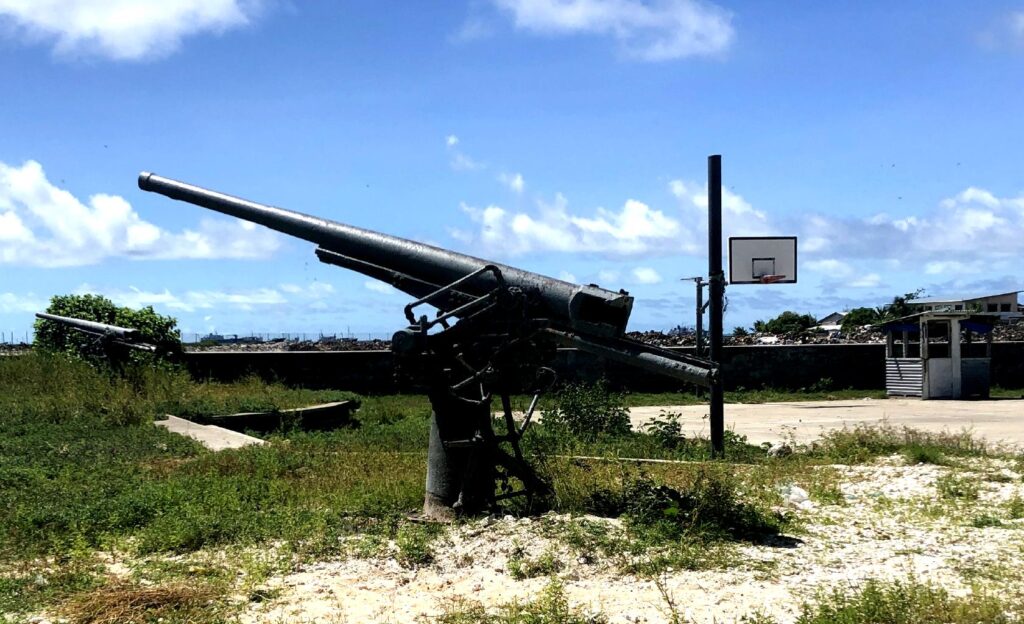
As a result of the Battle of Tarawa, beach combing on Tarawa isn’t just seagulls and seashells by the seashore. The Japanese Vickers guns — leftovers from the Russo-Japanese War — are still pointing out to sea. A couple of rusted American warships are forever trapped on sandbars. The high school basketball court is surrounded by Japanese anti-aircraft guns.

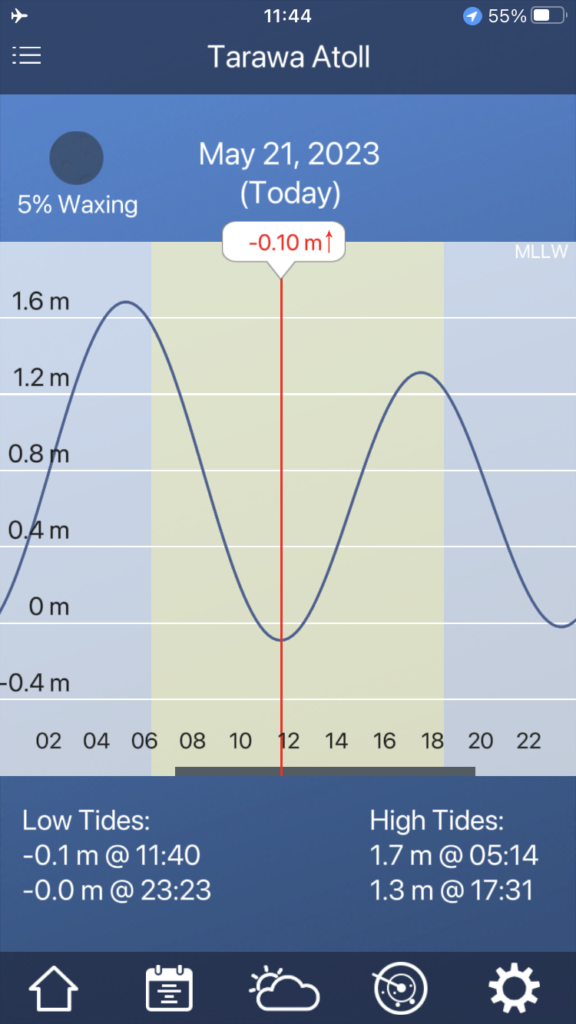
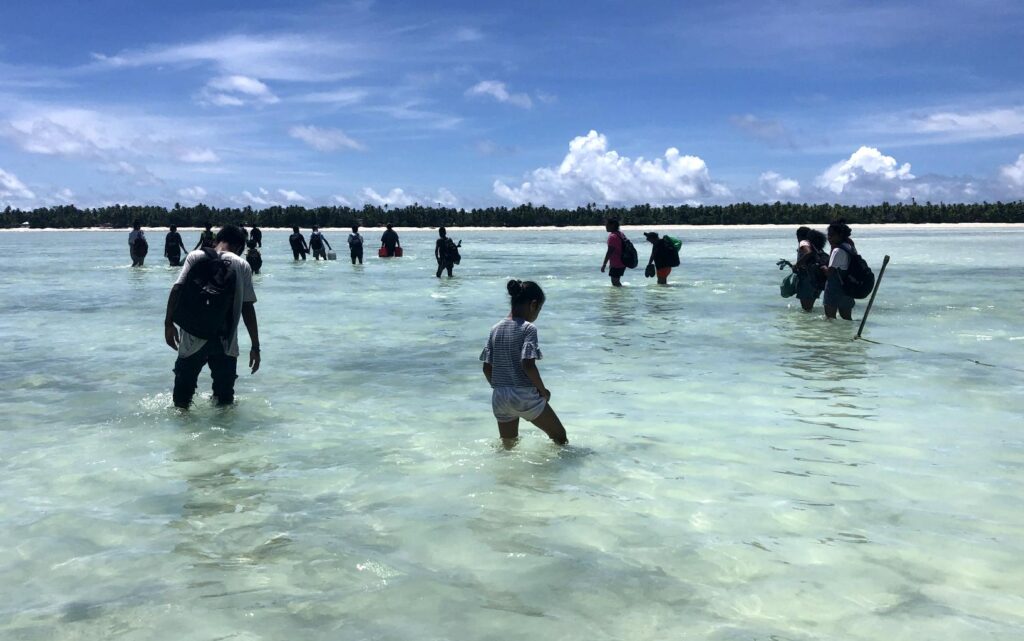
After my tour of Betio, I joined a friendly crowd aboard a hand=crafted motorized outrigger and cruised to far north end of Tarawa Lagoon. We left Betio at 10am and arrived at the north end of the lagoon at noon … at the lowest ebb tide of the month. Our outrigger, carrying 30 people and their luggage, ran aground and couldn’t get within a mile of the tree line. So, everyone waded ashore. Wading through warm, knee-deep water I realized yet again why it’s smart to travel light.
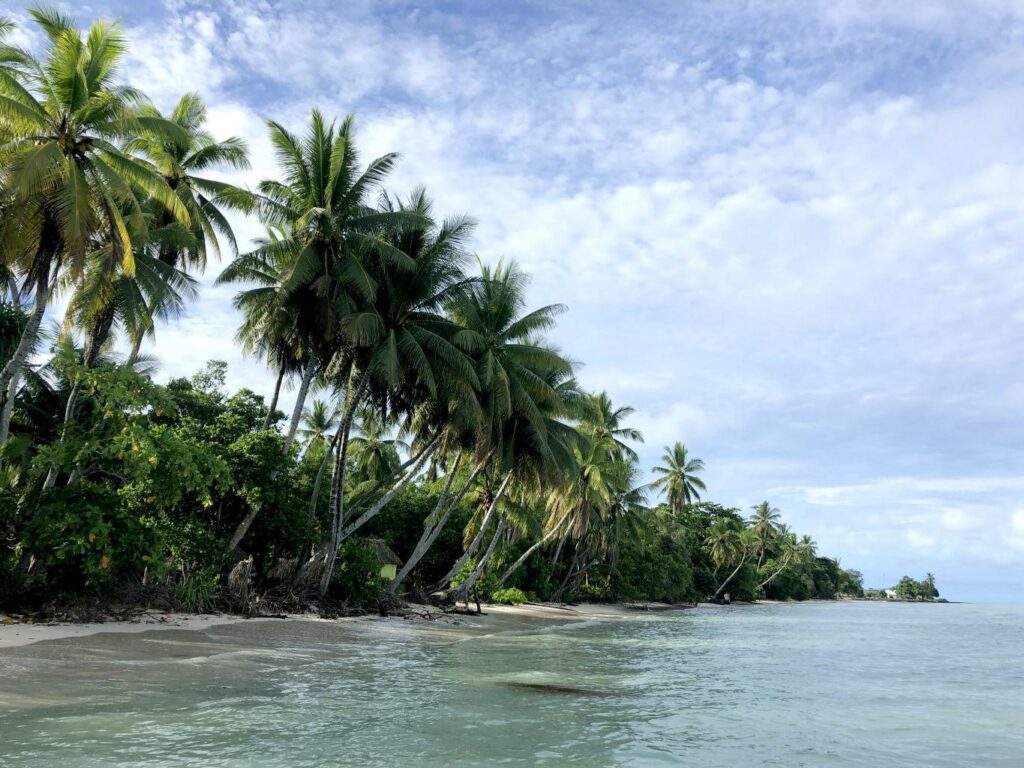
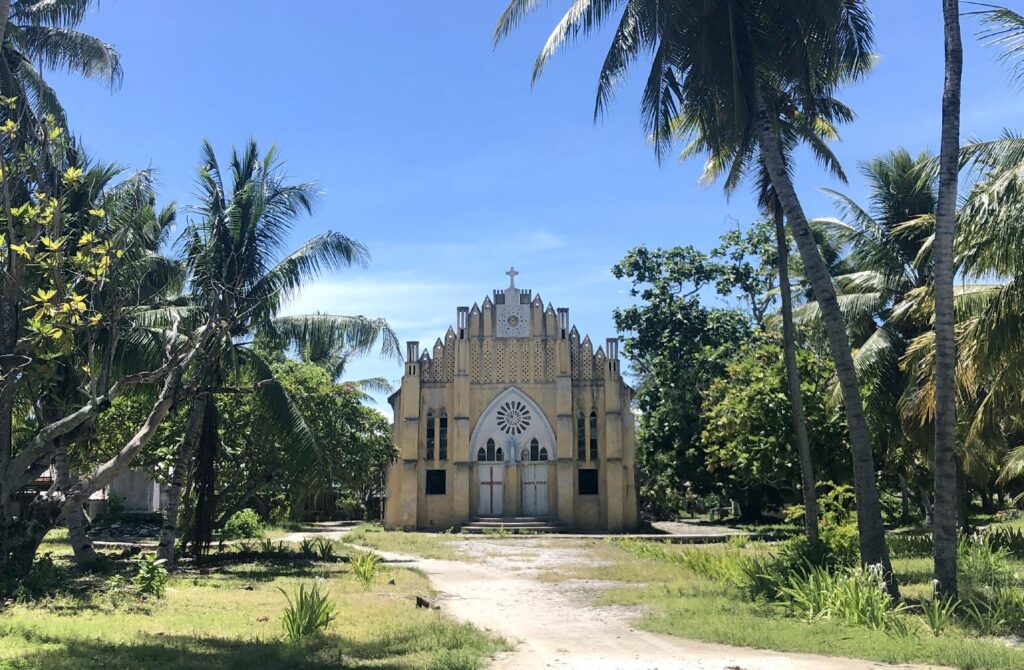
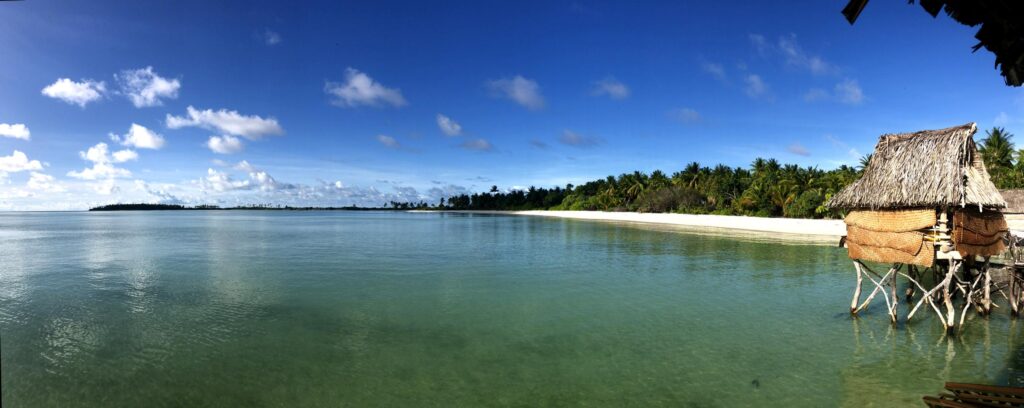
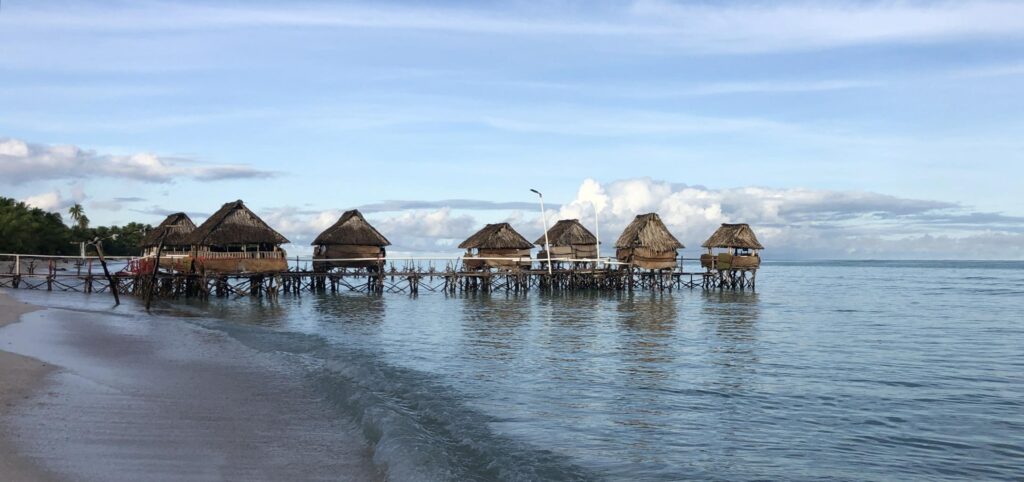
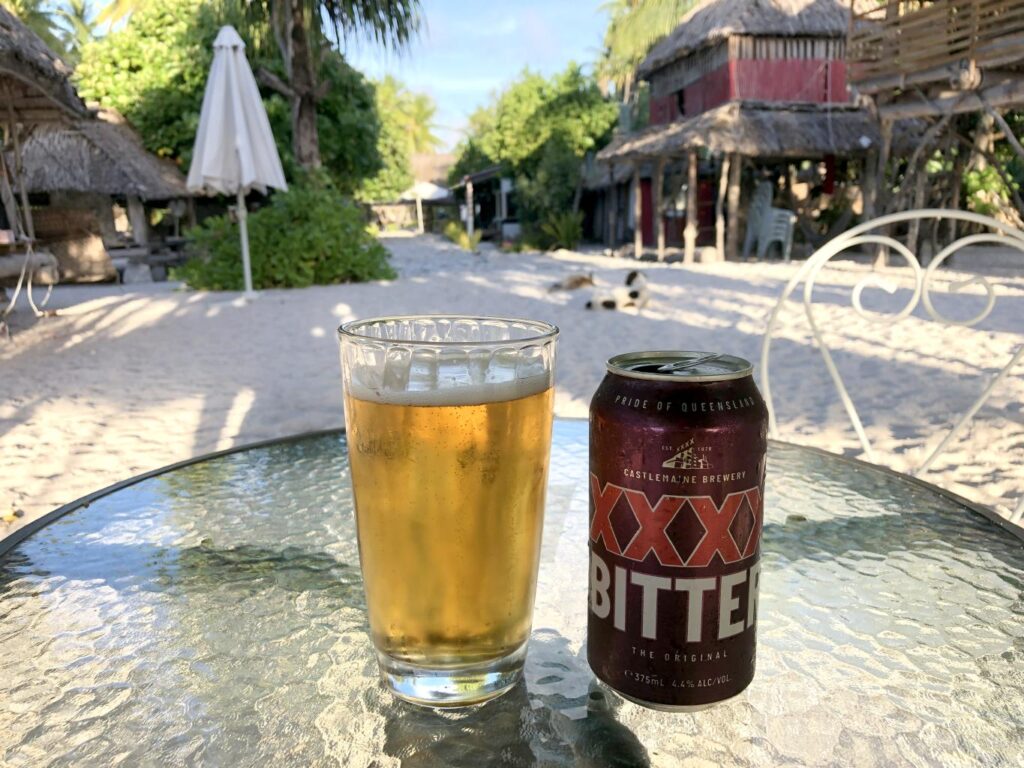
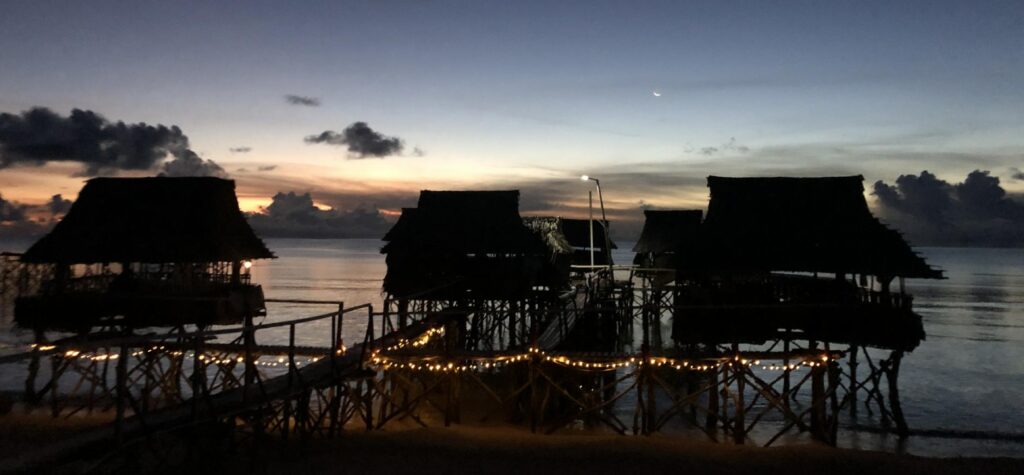
The long walk to shore was worth the treat that was coming next. In contrast to Betio and South Tarawa, North Tarawa is undeveloped. There’s no way to get here except via a daily ferry that runs intermittently followed by a half hour motorcycle ride on a sandy path. I was lodged at the Nemat Resort. As the only guest, I was given the premier bungalow farthest out over the water. Here was true island living. I feasted on fresh fish, coconuts and beer. With zero light pollution, the stars at night were heavenly. North Tarawa is more primitive than anything I ever found on Kosrae. I’m pleased to know that remote, undiscovered places like this still exist. (Travelers advice: Go to the Nemat Resort during the week. On weekends, it’s often reserved for government officials and their families.)



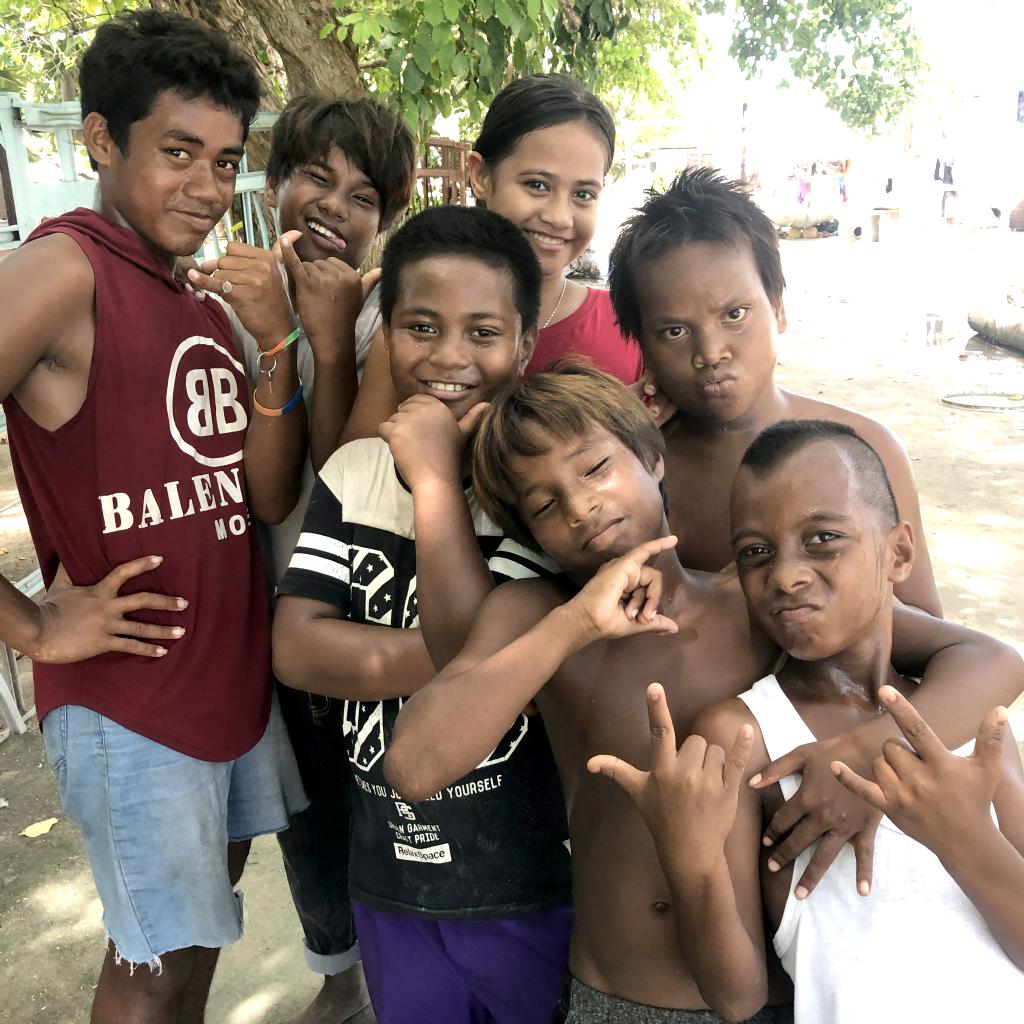






Kiribati doesn’t see many foreign tourists — only about 1,000 per month. Except for South Tarawa, most of Kiribati is an island wilderness untouched by the modern world.
Everyone I met was happy to meet me and often went out of their way to help me find what I needed and get where I wanted to go. Although their English was poor, the locals weren’t shy about talking to me and having their photos taken.
I only had time to visit one of Kiribati’s 32 atolls. The rest of Kiribati I learned about by reading The Sex Lives of Cannibals, a book I highly recommend.
Now it’s time to fly to the next island in the South Pacific — which is even less visited than Kiribati. In fact, my next destination is the least visited country in the world. Stay tuned!
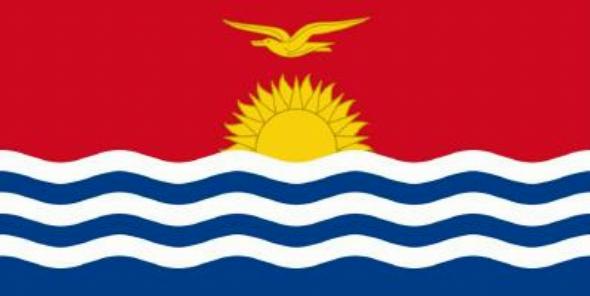

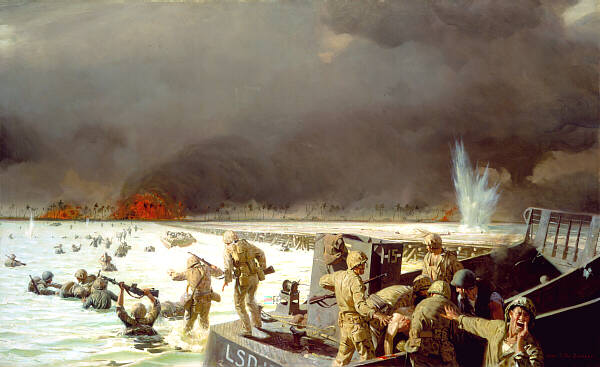
I love the pronunciation of the country recording. I never would’ve guessed that was the way to pronounce it.
As I was recording these voices, I realized that the “ti” in Kiribati language is almost like the “ti” in “nation.”
The Gilbertese language only has 13 letters and no ‘S’, so ‘ti’ is used to make the S sound. So Kiritimati island is…. Christmas island 🤯 Good luck in Nauru Nick! 😉 (I guessed right, didn’t I?)
Thanks for explaining the “ti” in the Gilbertese language.
Way to go Nick 👍👍
Summer (unofficially😉) beginning here this weekend with sun & 70’s ahead for the week!
Love your bungalow!! (It would be about $ 2000 a nite in these parts🤔).
Happy hopping!
🍉🍉
My bungalow in North Tarawa cost $33/nite and that included free use of the kayaks, snorkel gear and a motorcycle. Yay!
Great article and pics as usual!
Hey, Nick, will you be talking at the Mill Valley library again anytime soon? Really enjoy your travelogs!
Nick…My Dad was the Seabees on WWII and his battalion started unloading materials to build the runway and buried the dead. They built all shelters, drill wells, etc. until the end of February. The 74th Battalion then went to Kwajalein in Marshall Island where they did it all again. I have a terrific book with the details of all of this in many pictures. Except for the palm trees (which were all destroyed in the invasion) it looks like the atoll hasn’t changed much.
With your personal connection to Tarawa through your father, have you considered visiting this place to see for yourself what he saw?